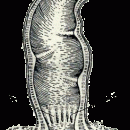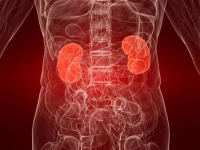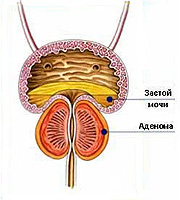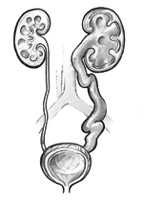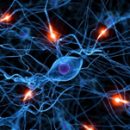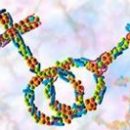Total urine analysis: decoding results, normal indicators and pathological values.
Content
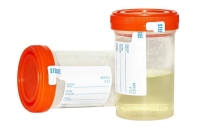 General urine analysis — This is a laboratory study that allows us to estimate the composition and physicochemical properties of Urin. These indicators give the doctor to the doctor to judge the availability of various kinds of diseases and the need to adjust therapy.
General urine analysis — This is a laboratory study that allows us to estimate the composition and physicochemical properties of Urin. These indicators give the doctor to the doctor to judge the availability of various kinds of diseases and the need to adjust therapy.
How to prepare urine for analysis
For urine preparation for general analysis, it is necessary to approach responsibly in order not to distort the results of the study. It is required to conduct a thorough toilet of the genital organs to eliminate the ingress of any discharge into liquid. It requires a sterile dry container to collect, it can be purchased in a pharmacy or use any suitable from home reserves.
Patients who conducted cystoscopy should refrain from the overall analysis of urine within 6-8 days. It is also not recommended to collect material for women in the menstrual period so that blood does not hit the tests and did not distort the overall picture.
The reception of some drugs can affect the results of the overall analysis of urine, so you will have to either temporarily stop therapy, or to warn a doctor in advance.
Norms and deviations in general urine analysis
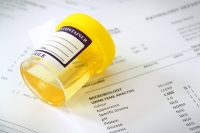 In the normal state, Urina has a yellow color of different shades, transparent, with a specific, not sharp smell. The proportion of urine of a healthy person is about 1.018 in the morning portion, it does not observe protein, bilirubin, hemoglobin, ketone bodies and glucose, there are no mushrooms and bacteria, cylinders, salts. The content of blood components is permissated in minor quantities, values fluctuate depending on the patient's floor.
In the normal state, Urina has a yellow color of different shades, transparent, with a specific, not sharp smell. The proportion of urine of a healthy person is about 1.018 in the morning portion, it does not observe protein, bilirubin, hemoglobin, ketone bodies and glucose, there are no mushrooms and bacteria, cylinders, salts. The content of blood components is permissated in minor quantities, values fluctuate depending on the patient's floor.
Deciphering values
In most indicators, the overall analysis of urine in decoding for adults and children is practically no different.
- Transparency. It can affect impurities in the urine (salts, blood components, epithelium, fats). Lounge is observed in inflammatory processes in the urinary tract. For older patients, it is not pathological, it is associated with age-related changes.
- Colour. Diseases of the urogenital system paint urine in the shades of red (from the scarlet to the brown).
- Smell. The smell of feces indicates bubble-settal fistula, ammonia — on cystitis, rot — on gangrenous pathologies of urinary tract, acetone — on sugar diabetes.
- PH. Alkaline reaction is characteristic of vegetarians and patients with inflammatory pathologies. Acosite reaction is characteristic of a diet with a predominance of meat products and for metabolic disorders.
- Specific gravity. With pyelonephritis, urine density decreases, diabetics and patients with cardiovascular disorders — rises.
- Protein. Traces of protein in the urine talk about the need for further surveys, and directly protein — about renal failure and inflammation in the kidneys.
- Bilirubin. The presence in the urine bilirubin signals the viral hepatitis, cirrhosis, mechanical jaundice.
- Ketone bodies. They become noticeable in the analysis with severe dehydration (diarrhea, vomiting, high body temperature, etc.)
- Leukocytes. They indicate pathological processes in the urogenital system.
- Erythrocytes. They appear with urolithiasis, bleeding in the urinary tract, problems with coagulation.
- Cylinders and epithelium. These components are present in the urine in infectious diseases and organic kidney pathologies, along with cylinders and epithelium in the urine rises protein.
- Sololi. Their presence speaks of avitaminosis, metabolic disorders and the predominance of a single product in the patient's diet.
- Flora, mushrooms, parasites: the presence of any of them indicates diseases of the urogenital system and requires appropriate therapy.

